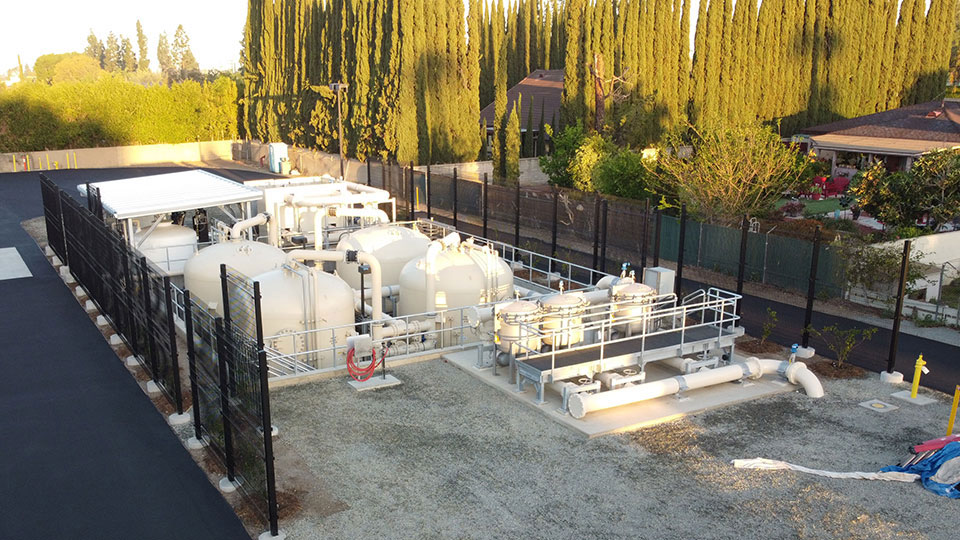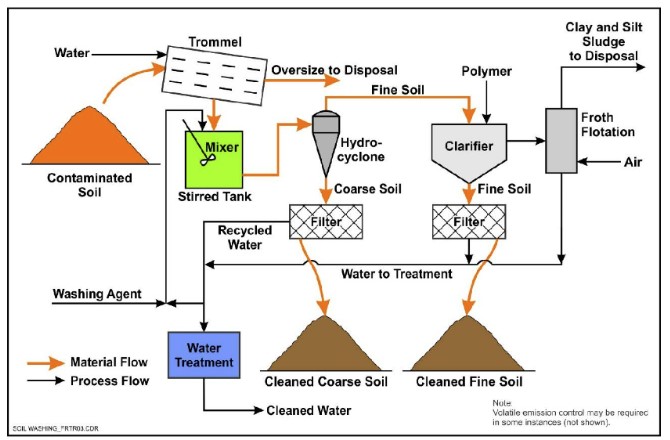M270 PFAS Treatment for Eco-Friendly Waste Management
Wiki Article
Exactly How PFAS Therapy Guarantees Tidy and Lasting Water
The presence of PFAS, generally referred to as "forever chemicals," presents substantial obstacles to water quality and public health and wellness. Advanced treatment technologies, including activated carbon adsorption and membrane layer filtering, have become reliable services to reduce these pollutants. By utilizing these approaches, neighborhoods can not only accomplish cleaner water however likewise foster lasting techniques that shield ecosystems. Nonetheless, the effects of these treatments extend past prompt health advantages; they increase important concerns concerning lasting water monitoring strategies that need to be dealt with to make sure a durable future. What does this mean for our strategy to water sustainability?
Understanding PFAS Contamination
PFAS, or per- and polyfluoroalkyl substances, have actually arised as a significant ecological problem due to their extensive occurrence and persistence in the atmosphere. These synthetic chemicals have been made use of in various commercial applications and customer products, consisting of non-stick cookware, water resistant clothing, and food packaging, due to their one-of-a-kind homes such as water and oil resistance.The contamination of soil and water sources by PFAS happens mostly via commercial discharges, firefighting foam usage, and leaching from landfills. pfas management. As soon as released, these substances are resistant to deterioration, leading to their buildup in the environment. This perseverance elevates crucial concerns, as PFAS can take a trip fars away via groundwater and surface water systems, influencing drinking water materials and environments

Health Dangers of PFAS
The perseverance of PFAS in the environment raises considerable health issues for individuals subjected to these materials. Called "forever chemicals," PFAS do not damage down conveniently and can accumulate in human bodies with time. Study has actually connected PFAS direct exposure to different adverse health results, including immune system disorder, liver damage, and boosted threat of particular cancers cells - pfas management. Significantly, studies have revealed raised cholesterol degrees and potential effects on reproductive and developing wellness, specifically in expecting individuals and infants.The universality of PFAS in customer products, such as non-stick pots and pans, water-repellent fabrics, and food packaging, further enhances the risk of exposure. Consuming alcohol water contaminated with PFAS is a significant concern, as these chemicals can seep into groundwater resources. Vulnerable populaces, consisting of children and those living near industrial websites, might encounter heightened threats because of their creating systems and potential for higher exposure levels.
As awareness of these wellness threats remains to grow, governing firms are beginning to develop guidelines for PFAS levels in drinking water. Public wellness efforts are necessary to alleviate direct exposure and secure communities from the long-lasting impacts of these dangerous materials.

Innovative Therapy Technologies
How can we efficiently take on the difficulties posed by PFAS contamination in water resources? Cutting-edge treatment modern technologies are becoming important options in the quest for tidy water. These approaches concentrate on the removal or destruction of per- and polyfluoroalkyl materials (PFAS), which are well-known for their determination in the atmosphere.One appealing method is adsorption utilizing sophisticated materials, such as activated carbon and ion exchange materials. These products have actually revealed effectiveness in capturing PFAS molecules from water. An additional noteworthy modern technology is membrane layer purification, which makes use of nanofiltration and reverse osmosis to separate contaminants at the molecular degree, thus offering an obstacle versus PFAS.
Furthermore, progressed oxidation processes (AOPs) employ solid oxidants to break down PFAS compounds right into harmless by-products. This approach is particularly effective for treating extremely contaminated water resources. Bioremediation strategies, using details microorganisms, are also being explored to deteriorate PFAS.
As research study continues, hybrid systems that integrate several technologies might use improved efficiency, resolving the intricacies of PFAS contamination. The development and implementation of these ingenious treatment technologies are necessary actions toward guaranteeing the safety and security and sustainability of our water sources.
Advantages of Reliable PFAS Therapy
Successfully treating PFAS contamination in water resources considerably boosts public health and wellness and ecological safety. PFAS, frequently described as "forever chemicals," are immune to destruction and can accumulate in the body, bring about major health dangers such as cancer cells, liver damage, and immune system disorder. By implementing efficient therapy methods, areas can lower exposure to these unsafe substances, eventually enhancing the wellness results of their populations.
Additionally, successful PFAS treatment contributes to the preservation of neighborhood communities. Polluted water can adversely influence marine life and interfere with the fragile equilibrium of neighborhood environments. By making certain clean water, therapy procedures protect biodiversity and maintain ecological integrity.
In addition, effective PFAS remediation can foster public confidence in water quality. When communities are assured that their drinking water is without dangerous pollutants, it promotes a feeling of safety and well-being. This depend on is essential for community engagement and assistance for ongoing water monitoring efforts.
Future of Water Sustainability
Amid expanding issues about water top quality and shortage, the future of water sustainability hinges on cutting-edge approaches and collective efforts. As areas face the impending risks of impurities like PFAS, the advancement of innovative m270 pfas treatment therapy technologies is necessary. These innovations not only concentrate on the removal of damaging materials but additionally promote the reuse and recycling of water, therefore minimizing overall need.Moreover, efficient water governance plays a critical role in making certain sustainable methods. Policymakers have to incorporate scientific research study with governing frameworks to establish clear guidelines for water use and therapy. Stakeholder involvement, consisting of neighborhood communities and industries, fosters a feeling of shared obligation and motivates sustainable methods throughout numerous sectors.
Investment in framework is likewise important; upgrading aging systems to incorporate modern filtering and purification approaches can significantly enhance water top quality. Furthermore, embracing environment-friendly technologies, such as natural filtration systems, can give green options.
Eventually, the future of water sustainability hinges on a holistic technique that combines innovation, policy, and neighborhood participation. By prioritizing these components, we can secure our water resources for generations to find, making sure tidy and lasting water for all.
Conclusion
To conclude, the effective therapy of PFAS is crucial for making sure clean and lasting water. By utilizing advanced innovations such as turned on carbon adsorption, membrane layer filtration, and advanced oxidation procedures, areas can considerably decrease the health and wellness dangers related to these pollutants. The combination of these treatment approaches sustains ecosystem defense and enhances biodiversity. Inevitably, durable PFAS therapy approaches contribute to long-term resilience in water management, cultivating public rely on water top quality and advertising sustainable practices.Report this wiki page